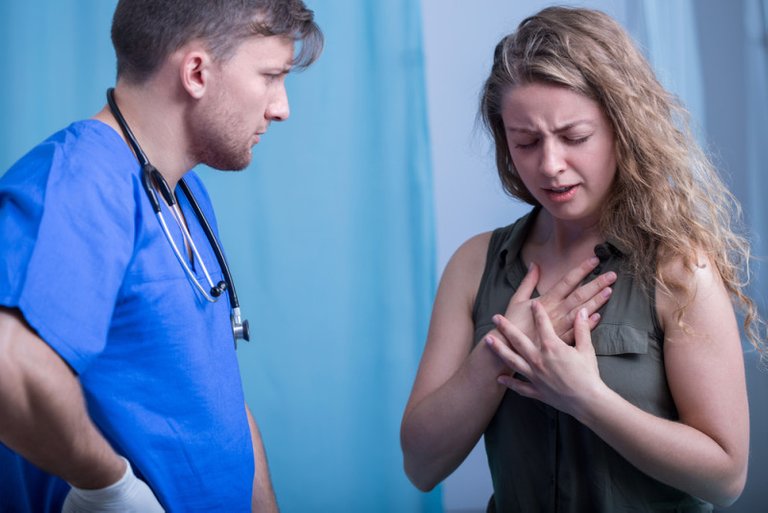
Mold is considered the hidden cause of many health issues. It can be present inside your home and you may not even realize it.
Knowing the symptoms is key in order to treat the issue and avoid further health problems.
It’s not easy though, as symptoms of mold exposure are often attributed to something else, and conventional medicine often does not consider mold a problem, thus not providing any real solutions.
Here are the most common symptoms of illness related to mold:
Headache
Fatigue, post-exercise malaise, and weakness
Memory problems, focusing issues, executive function problems, brain fog
Light sensitivity, blurred vision, red eyes
Sinus problems, air hunger, cough, shortness of breath, asthma-like signs
Vertigo
Static “shocks”
Weight gain despite sufficient effort (weight loss resistance)
Tremors
Muscle cramps, constant nerve pain, pain in the joints, aches without inflammatory arthritis, “ice pick” pain
Persistent nerve pain
Numbness and tingling
Abdominal pain, diarrhea, appetite changes, nausea
Night sweats or temperature regulation issues
Excessive thirst
Increased urination
Metallic taste
Naturally one can see how easily they will be confused with other types of health issues. But for three decades, mold has been studied and has been found to have very nasty effects on one’s health.
Mold is a combo of various types of fungi. They grow in filaments, then reproduce, creating tiny spores. These spores sprout and fly away, thus they can’t be spotted by the human eye, making mold exposure difficult to initially identify.
But we do know what mold likes: warm, damp, and humid places. Places with poor ventilation, floods and water leaks, mold may appear in. Even if the water leak is dried up it may still be present.
In the bathroom or the shower (even in the showerhead), rooms with subpar ventilation are areas where mold likes to hang out. Furniture, books, pets, shoes, paper, carpet, and even in the air circulating around are even more mold hangouts. HVAC filters are recommended to be changed every three months.
Buildings that have water damage to them can create a very complex combo of contaminants that end up present in the air, and the dust. Mycotoxins are toxic ingredients which mold can form. They remain on spores and fragments of this mold gets released into the air.
Sinuses are found to be the result of persistent mold illness. This illness isn’t caused by a single toxin but rather the building that is water-damaged or the area that has water damage.
Half the buildings people live in are water damaged and this causes mold and mold illness for those that are more prone. Reducing or dealing with this exposure is vital, especially since so many people work inside or spend time inside.
Biotoxin illness is what mold toxicity is classified under. Its also called Chronic Inflammatory Response Syndrome (CIRS), which is defined by Ritchie Shoemaker, MD, as “an acute and chronic, systemic inflammatory response acquired following exposure to the interior environment of a water-damaged building with resident toxigenic organisms, including, but not limited to fungi, bacteria, actinomycetes, and mycobacterium as well as inflammagens… “
Here’s something shocking which Dr. Shoemaker points out: “24 percent of people cannot make adequate antibody responses, and they’re the ones that comprise over 95 percent of people who have an illness from water-damaged buildings.”
So it turns out, according to Shoemaker, that 24% of the population is genetically susceptible to mold toxicity! The gene responsible for this is an immune response gene (HLA-DR), and these people will have increased risk.
Two percent more of those who are extra prone will have a “sicker quicker” gene variation. But, even if you are not prone at all, you can still very much suffer from mold exposure.
So if you believe you have been exposed to mold, and are experiencing the symptoms of such, then this is what you should do:
-Research everything about mold illness.
-Test mold presence in the home. You can have a test done or find a professional which can pinpoint mold. An ERMI test costs $325 and can be done by yourself. But if positive, then seek a professional.
-Work with a clinician who can examine and determine how susceptible you are to mold exposure and the related illness that can occur.
So if you have been sick, and cannot figure out why, look into mold exposure. Find out if it is in your home or office, as it could be the reason for your illness.
Source: http://damn.com/17-signs-of-mold-illness-and-how-to-tell-if-youre-at-risk/
Not citing sources of copied works is plagiarism and frowned upon by the community.
Sharing content and add value by:
Repeated plagiarized posts are considered spam. Spam is discouraged by the community, and may result in action from the cheetah bot.
Creative Commons: If you are posting content under a Creative Commons license, please attribute and link according to the specific license. If you are posting content under CC0 or Public Domain please consider noting that at the end of your post.
Not indicating that the content you copy/paste is not your original work could be seen as plagiarism.
If you are actually the original author, please do reply to let us know!
Thank You!